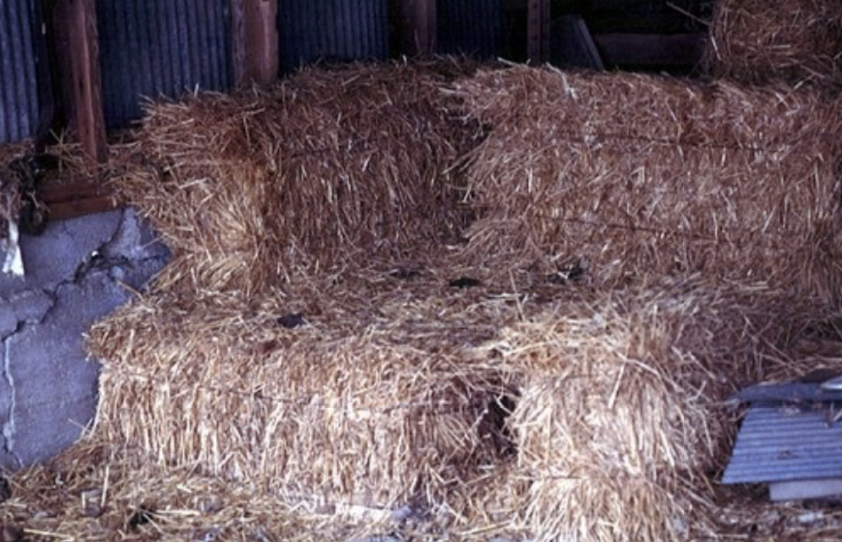There has been growing interest in straw bale gardening. What better place to try this than in Kansas where straw is so abundant. First, some pointers.
g These are the “small” straw bales that are about 2 feet high and 3 feet long.
g Place the bale on edge so the twine doesn’t rot.
g Bales can be placed anywhere including concrete or asphalt. Just make sure there is plenty of sun and watering is convenient
If you had cucumbers or muskmelons that suddenly turned brown and died last year, you may have had a disease known as bacterial wilt. The cucumber beetle carries this disease. Once a plant is infected, there is no cure, so prevention is the key. Because cucumber beetles overwinter as adults, early control measures are essential.
There are two types of cucumber beetles: striped and
spotted. The striped cucumber beetle is the most common. The 1/4-inch-long beetles are conspicuously colored: black head and antennae,
straw-yellow thorax, and yellowish wing covers with three distinct parallel and longitudinal
black stripes. Young plants can be protected with row covers, cones, or other types of mechanical barriers. Edges must be sealed to ensure that the beetles do not find a place to enter.
Plants will eventually outgrow these barriers, or they will need to be removed to allow insect pollination of the flowers. Apply insecticides before beetles are noticed in the planting. Continue to spray weekly throughout the season.
Homeowners can use permethrin (Bonide Eight Vegetable, Fruit & Flower Concentrate and Hi Yield Lawn, Garden, Pet and Livestock Insect Control ). Once plants have started flowering, spray in the evening after bees have returned to the hive. (Ward Upham)
Bale Conditioning
g Water the bales and keep them wet for 3 days. The bale will start to heat up as it breaks down.
g On days 4, 5 and 6, sprinkle fertilizer on the top of each bale with 1 cup of ammonium sulfate (21-0-0) or 1⁄2 cup of urea (46-0-0). Water the fertilizer in. This speeds the decomposition process.
g On days 7, 8 and 9, continue to sprinkle fertilizer on each bale but cut the amount in half.
g Stop fertilizing on day 10 but keep the bale moist.
g Check for heat on the top of each bale for each day after day 10. When the
temperature drops to below 100, the bale can be planted.
Planting
g Pocket Method: Make a hole for each plant several inches deep and fill with growing medium.
g Flat Bed Method: Cover the top of the bale with 3 to 4 inches of growing medium. g The growing medium can be well-aged manure, compost or potting soil.
Number of Plants per Bale
g Cantaloupe: 2
g Cucumber: 3-4 g Peppers: 3-5 g Squash (winter) 2
g Squash (summer) 2-3 g Tomatoes 2-3
Watering
Wateringwillbethemostchallengingaspectofmanagement. Thestrawwilldryquickly. A drip irrigation system on a timer can work well but may take some time to set up. Gardeners may also use soda bottles or milk jugs to water by poking drip holes in the lid, filling with water and then turning upside down next to the target plant.
This information was taken from an excellent publication from Washington State University that includesmuchmoredetailaswellasimages. See http://cru.cahe.wsu.edu/CEPublications/FS109E/FS109E.pdf . (Ward Upham)

